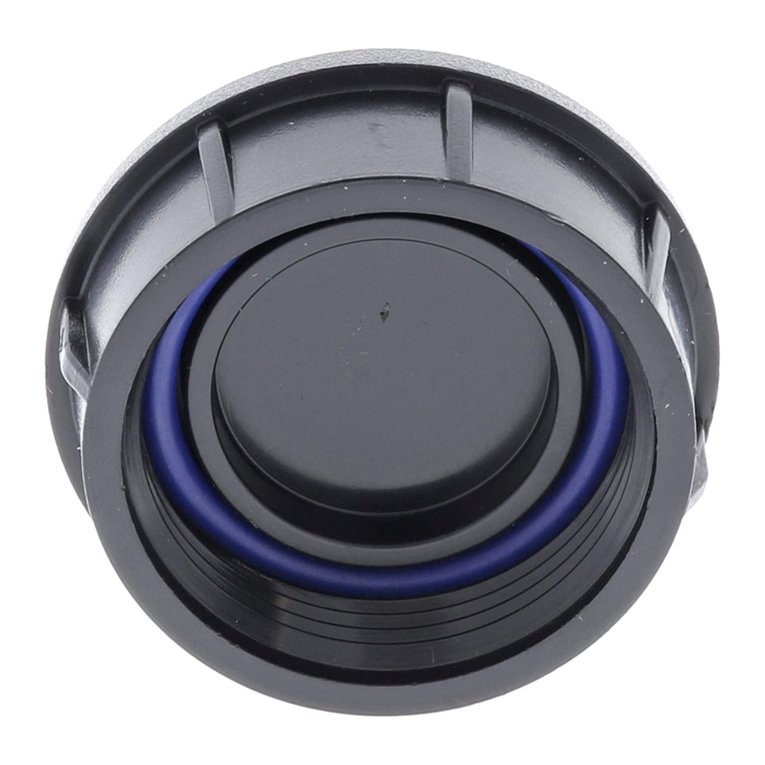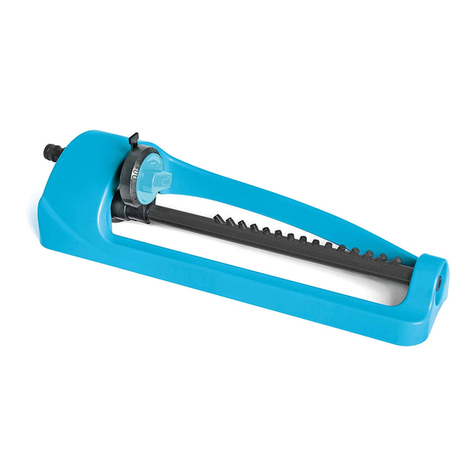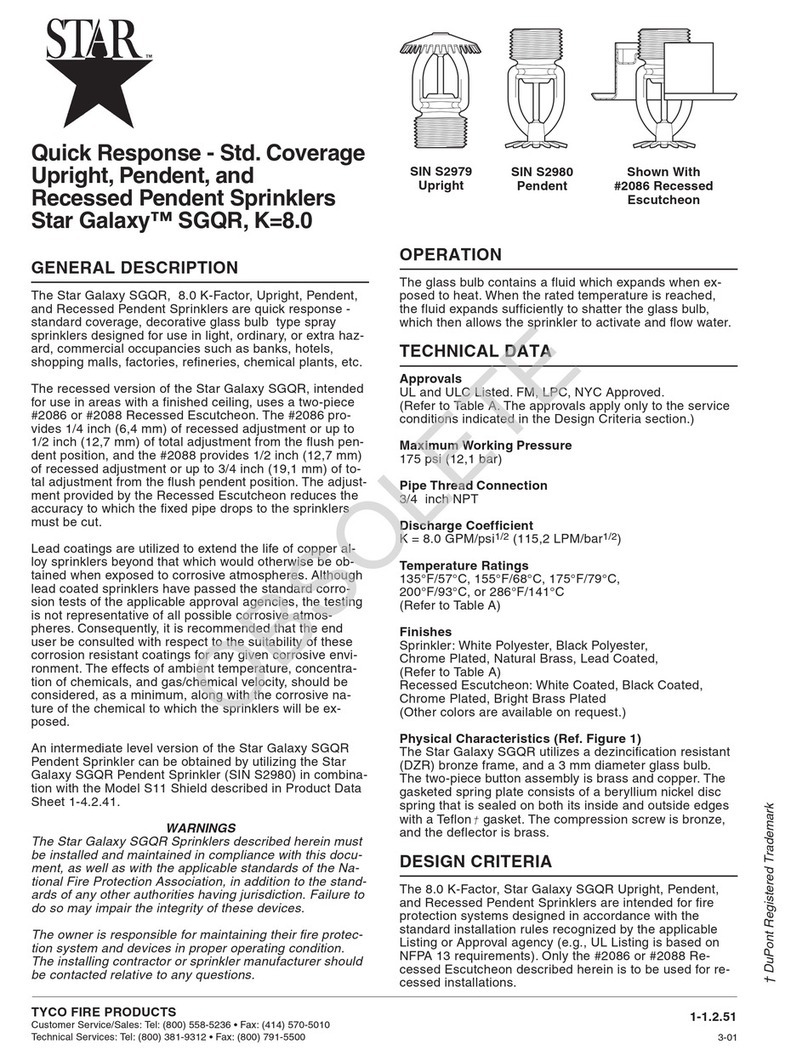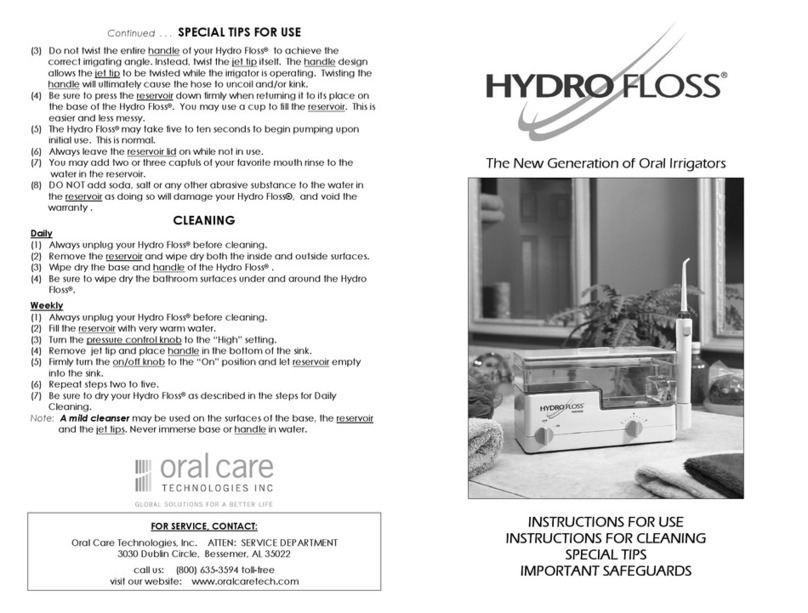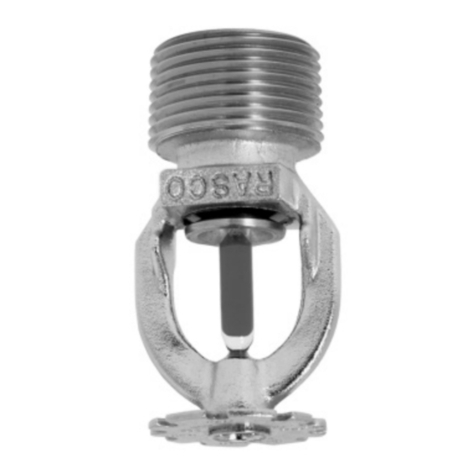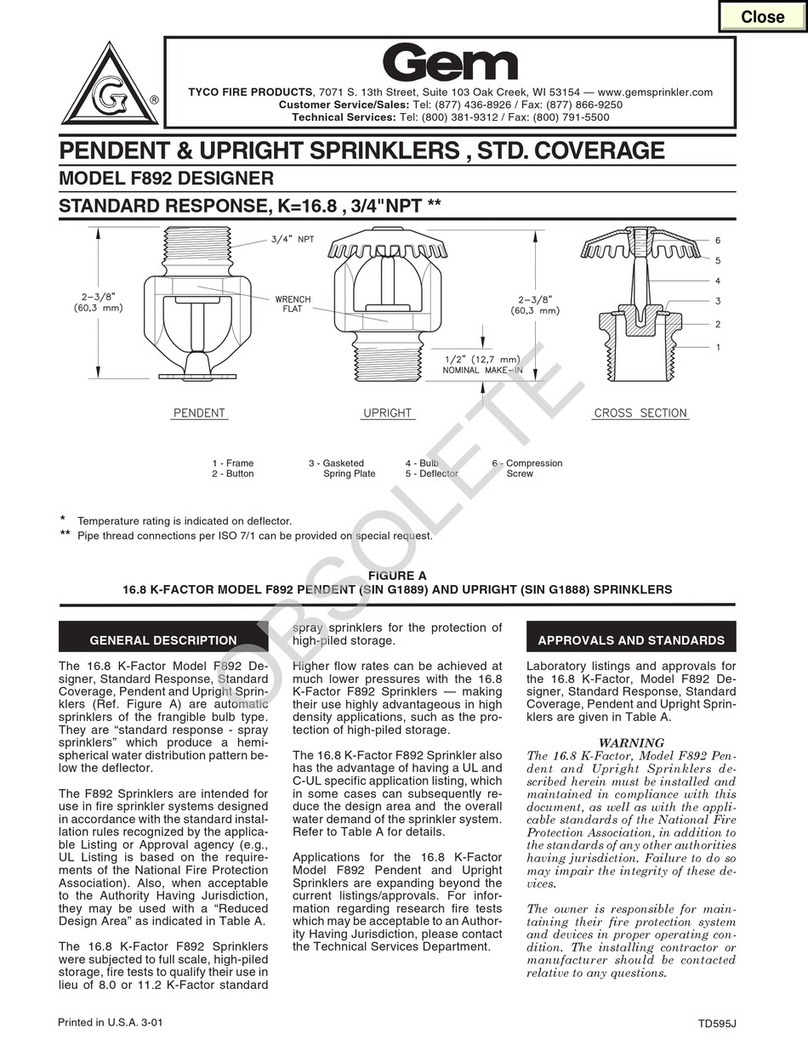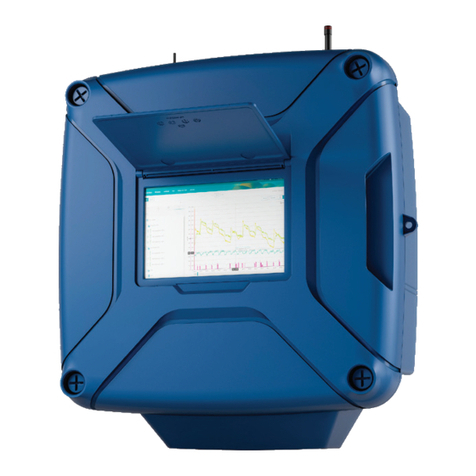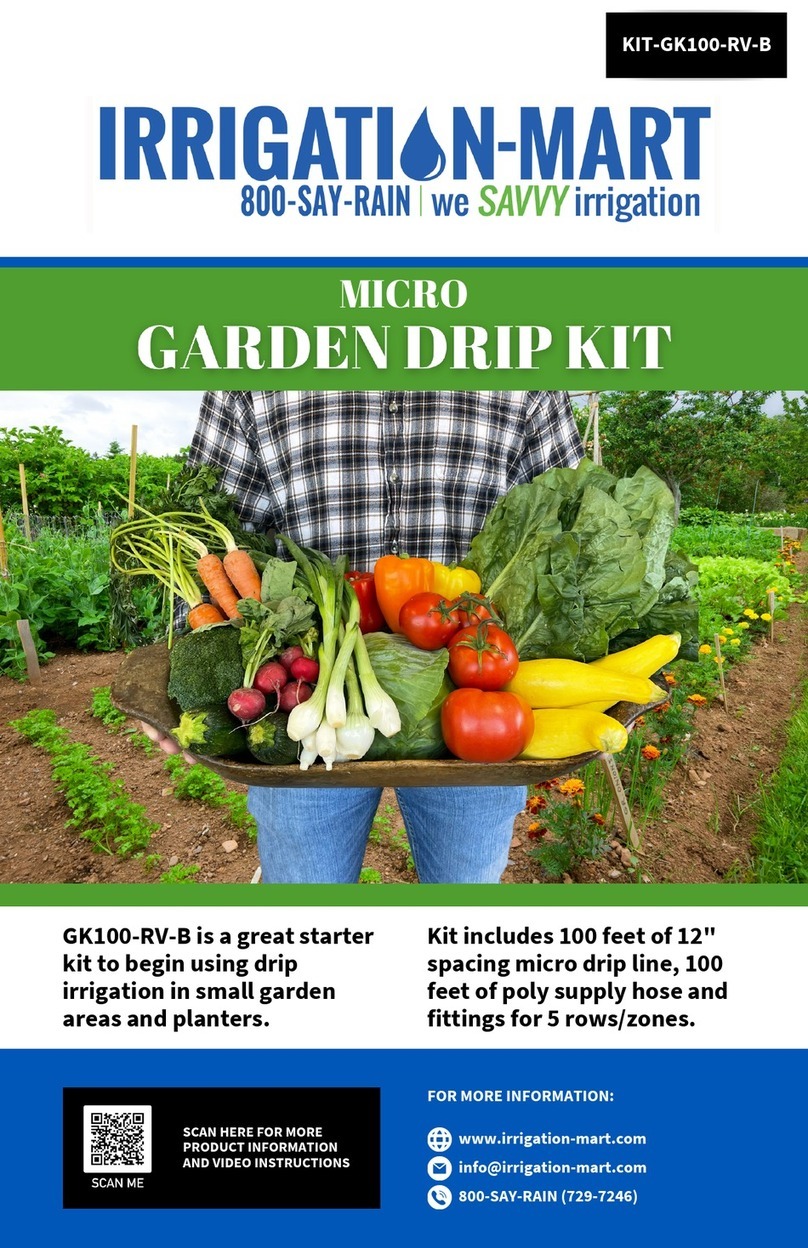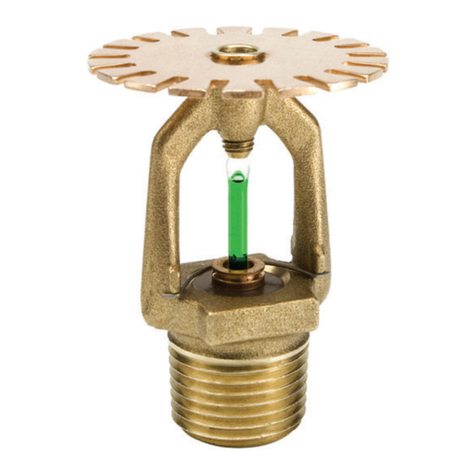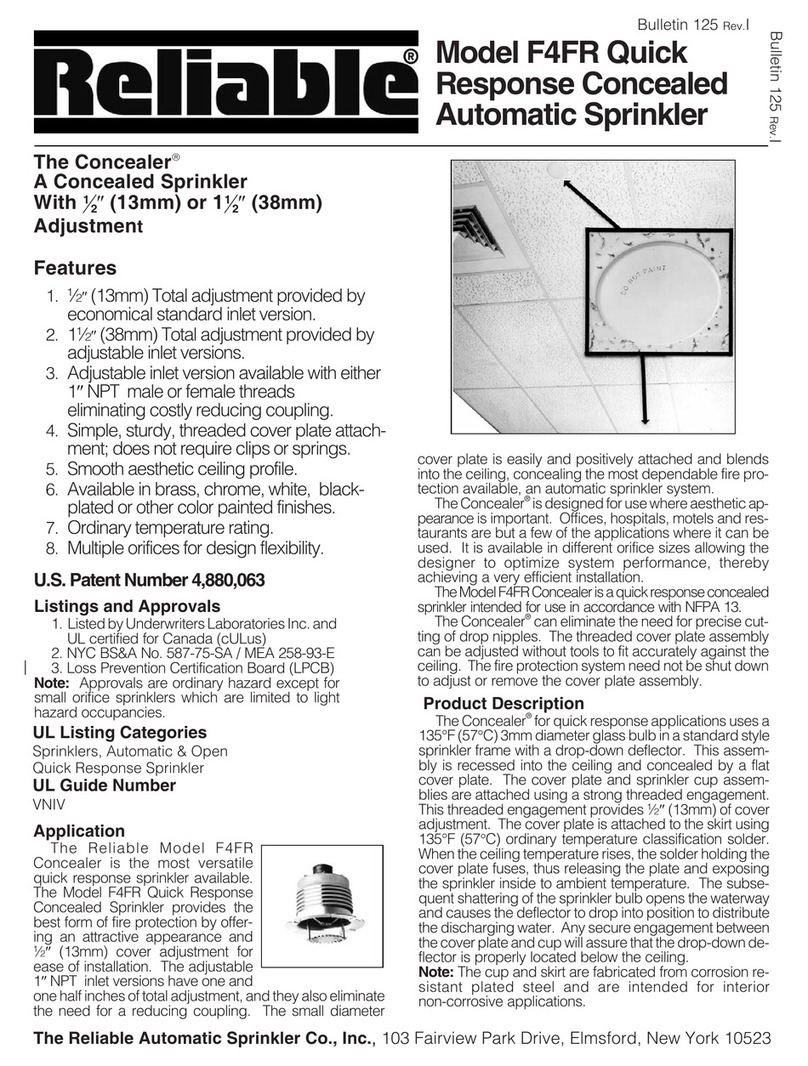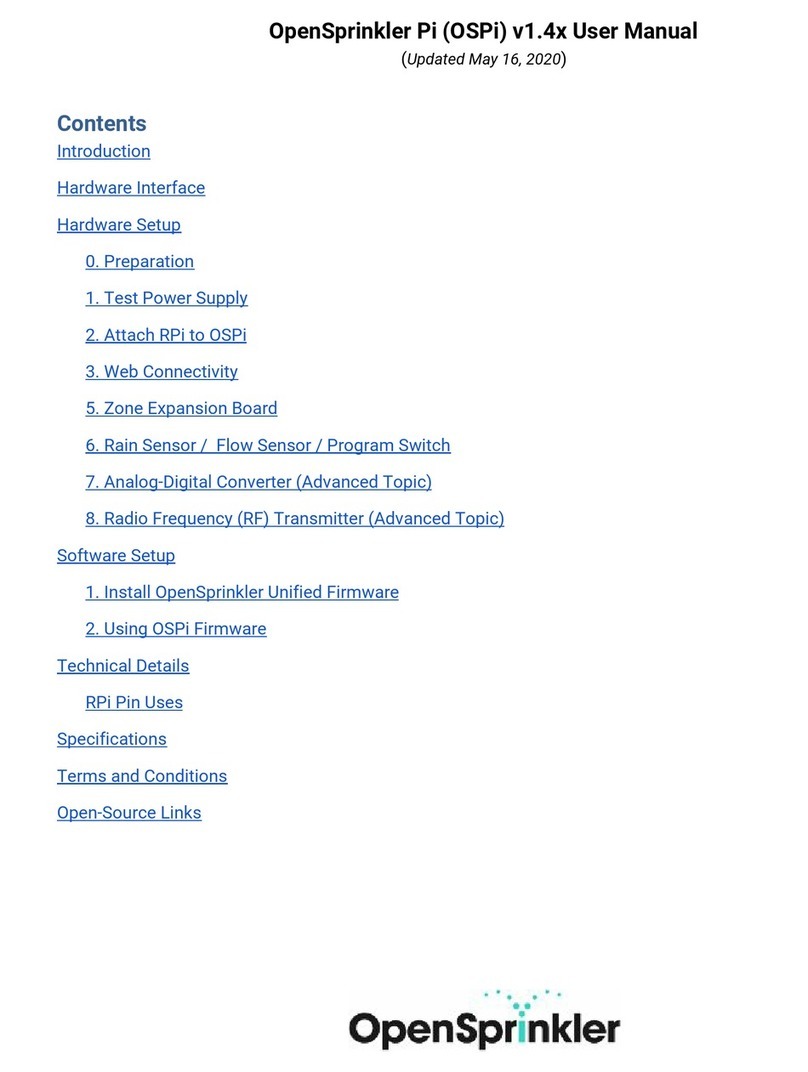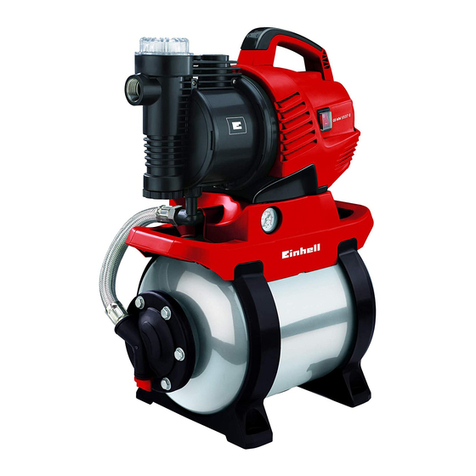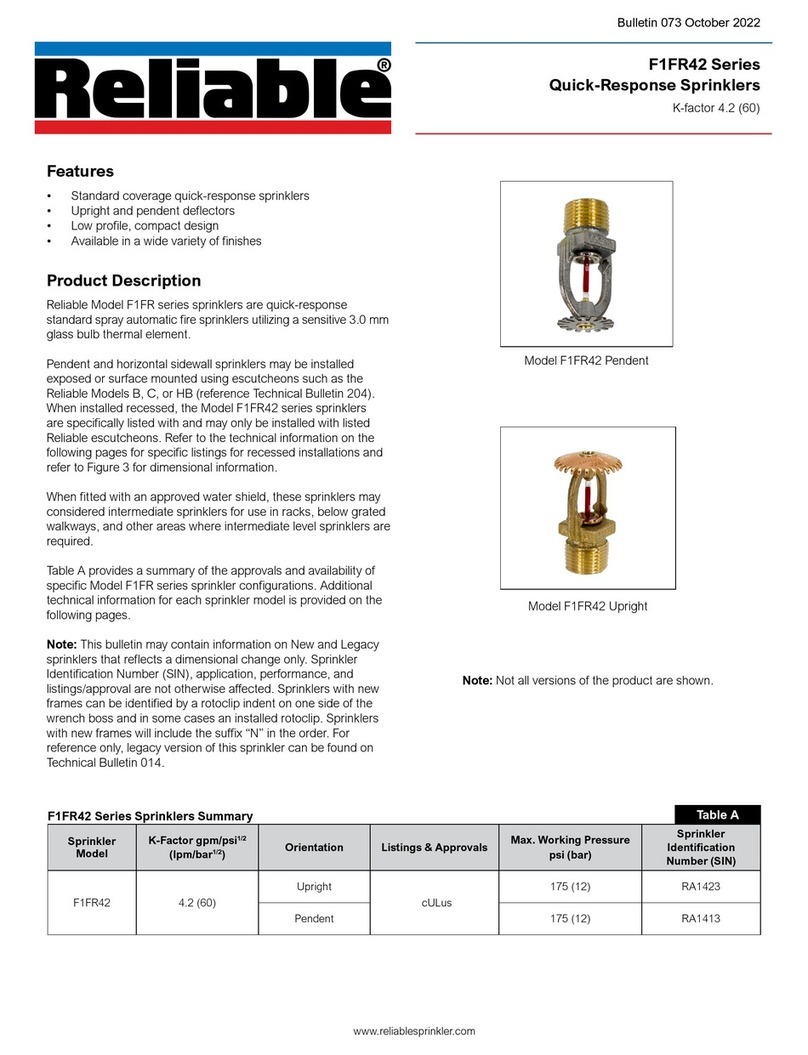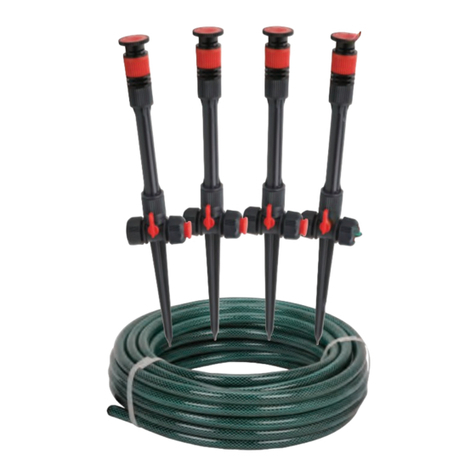
5
Soil layers and types.
The quality and homogeneity of the soil may present a problem. If the soil was not properly prepared and there are pieces
of construction debris, rocks and non-uniform soils, it is very difficult to obtain a uniform water spread. In all cases, but
particularly if the soil is compacted, soil properties can be greatly improved by ripping and disking, sifting the coarser
material and laying it down first. The ideal soil is 30 to 45 cm deep, uniform, has an equal amount of fine sand, loam and
clay, and is on top of a deep layer of pea gravel and coarse sand that provides drainage.
Disposal Field Design
Flow and pressure drop calculations.
The best way to calculate the water requirements of your disposal system is to make a sketch of the various areas to be
watered. A drawing to scale with contour lines is desirable
a) Divide the areas according to the type of soil, plants and irrigation requirements.
b) Calculate how many emitters are in each area. Multiply the number of emitters times the emitter flow rate at the design
pressure, which is normally 100 kPa. These flows can be obtained from Table 2 below.
c) In the case that the terain is sloping use pressure compensating PC Wasteflow, in which case output of each driper will
remain constant for pressures from 50 - 400 kPa.
Table 2. Line Pressure vs Emitter flow rates .
Pressure kPa Flow LPH
80 3.7
100 4.0
150 5.0
200 5.9
d) Check maximum recommended drip line length 67m for non-PC. If drip lines are too long, the pressure loss is too
high and hence the flow through the emitters is uneven. As a rule of thumb, to get a +5% to +7.5% flow uniformity, the
maximum loss from the point of pressure control to the furthest emitter should not exceed 2 to 3 metres of water head.
The maximum recommended lateral lengths for WASTEFLOW™4.0 lph drip lines on the level is 67 metres.
e) Check the layout of the main lines going into the irrigated plot, so that the maximum lateral length is not exceeded.
f) Check the design for flows, select pipe diameters for submains, select filters and valves.
g) Do a complete list of materials and specify all the requirements for the installation.
h) For more precise calculations on slopes use the curves given in Appendix 1 at the end of this manual.
A system will usually have emitter lines (laterals) placed on 60 cm centers with a 60 cm emitter spacing such that each
emitter supplies a 0.36 m2area . These lines are best placed at depths of 15 - 25 cm below the surface. This is a typical
design for systems on sandy and loamy soils which will have a cover crop of lawn grass. Other line spacing may be used
for special use situations such as for landscape beds where shrubs and trees are to be watered or if the plants are on an
irregular spacing. Closer line spacings of 40 to 45 cm may be used on heavy clay soils where lateral movement of water is
restricted.
The shallow depth of installation is an advantage of the trickle irrigation system since the topsoil or surface soil is
generally the most permeable soil for accepting water. The topsoil also dries the fastest after a rainfall event and will
maintain the highest water absorption rate.
A good vegetative cover is an advantage to prevent erosion from the field and utilize the water applied to the rooting zone.
Sites should be planted or seeded immediately after installation. Grasses are particularly suitable for this application. Most
lawn grasses will use 6 - 9 mm of water per day during the peak growing season. This calculates to be about 6 to 9 l/m2
/day, a significant part of the daily effluent loading. By overseeding lawns with winter ryegrass, this use efficiency can be
continued through much of the year.
For vegetation using 6 to 9 l/m2/day by evapo-transpiration, a sewage flow of 1,000 litres per day would supply the water
needs of a landscaped area of 170 to 112 sq. m. without having to add fresh make-up water. For areas larger than this, the
plants will suffer water stress during the hot dry months unless additional fresh water is applied.
To determine the rate of water application from various trickle irrigation designs, Table 3.1 gives the application rates for a
4.0 lph Classic emitter at various lateral line spacings. Table 3.2 Gives the application rates for 2.4 l/hr PC.
